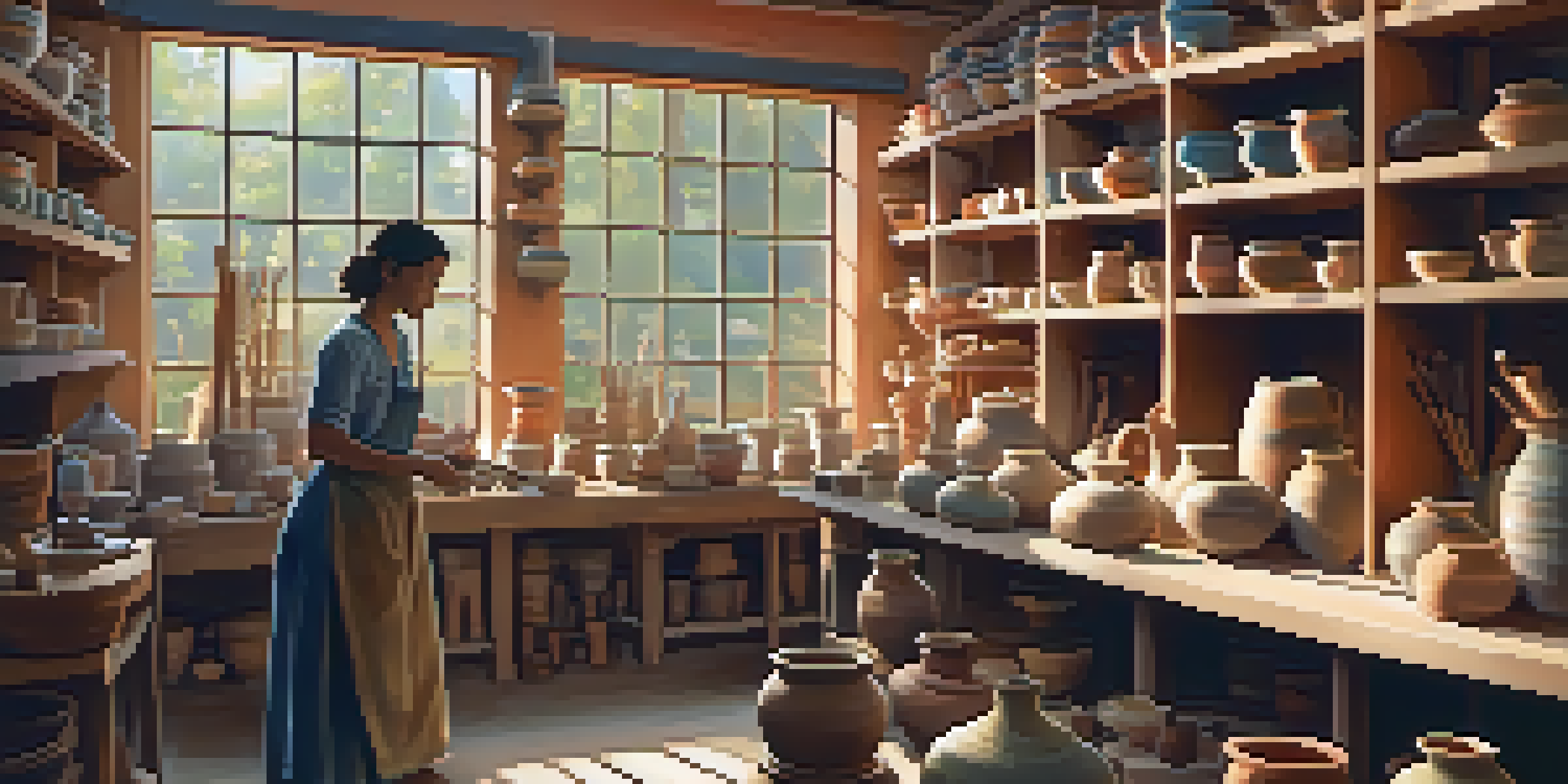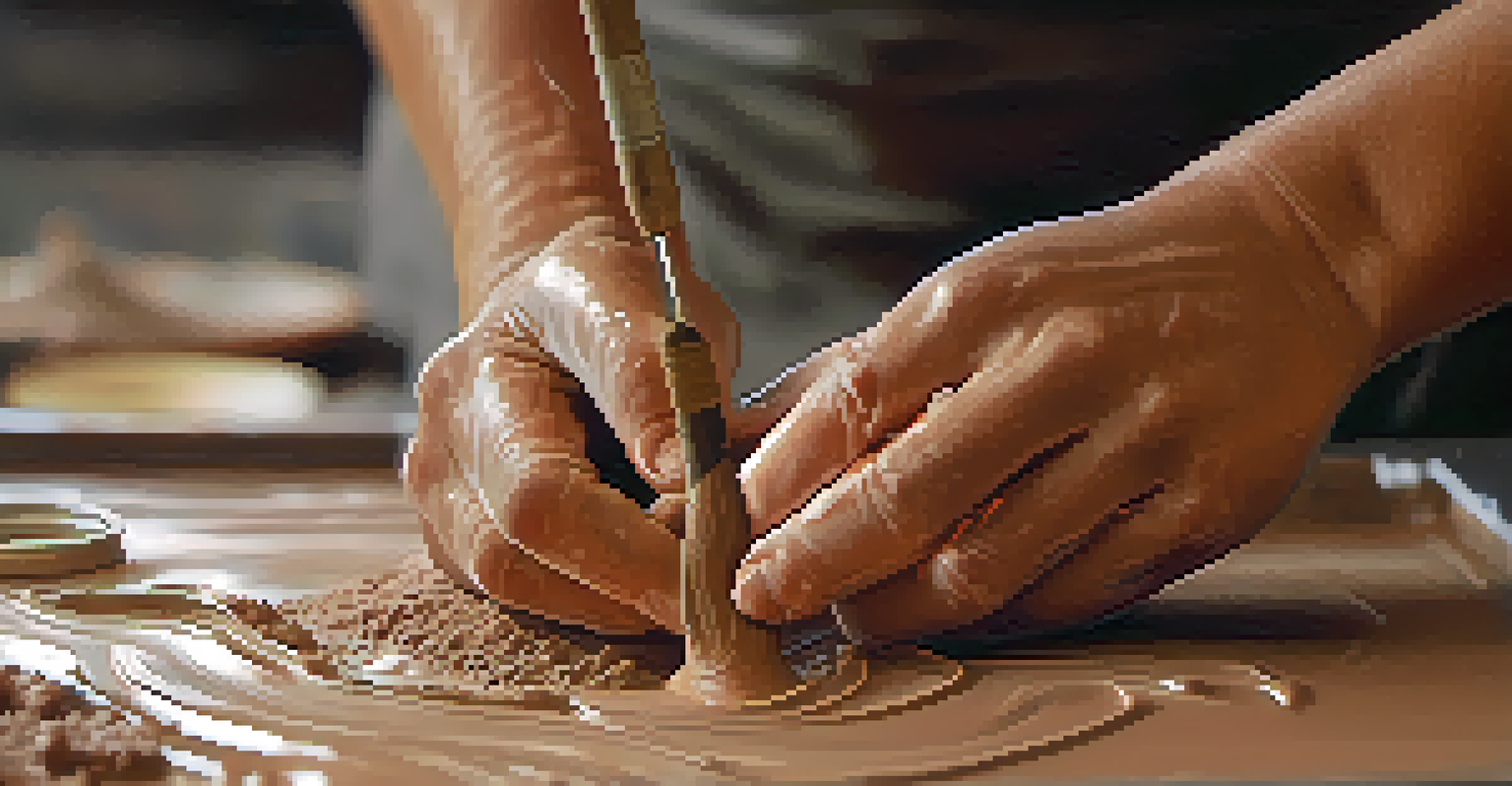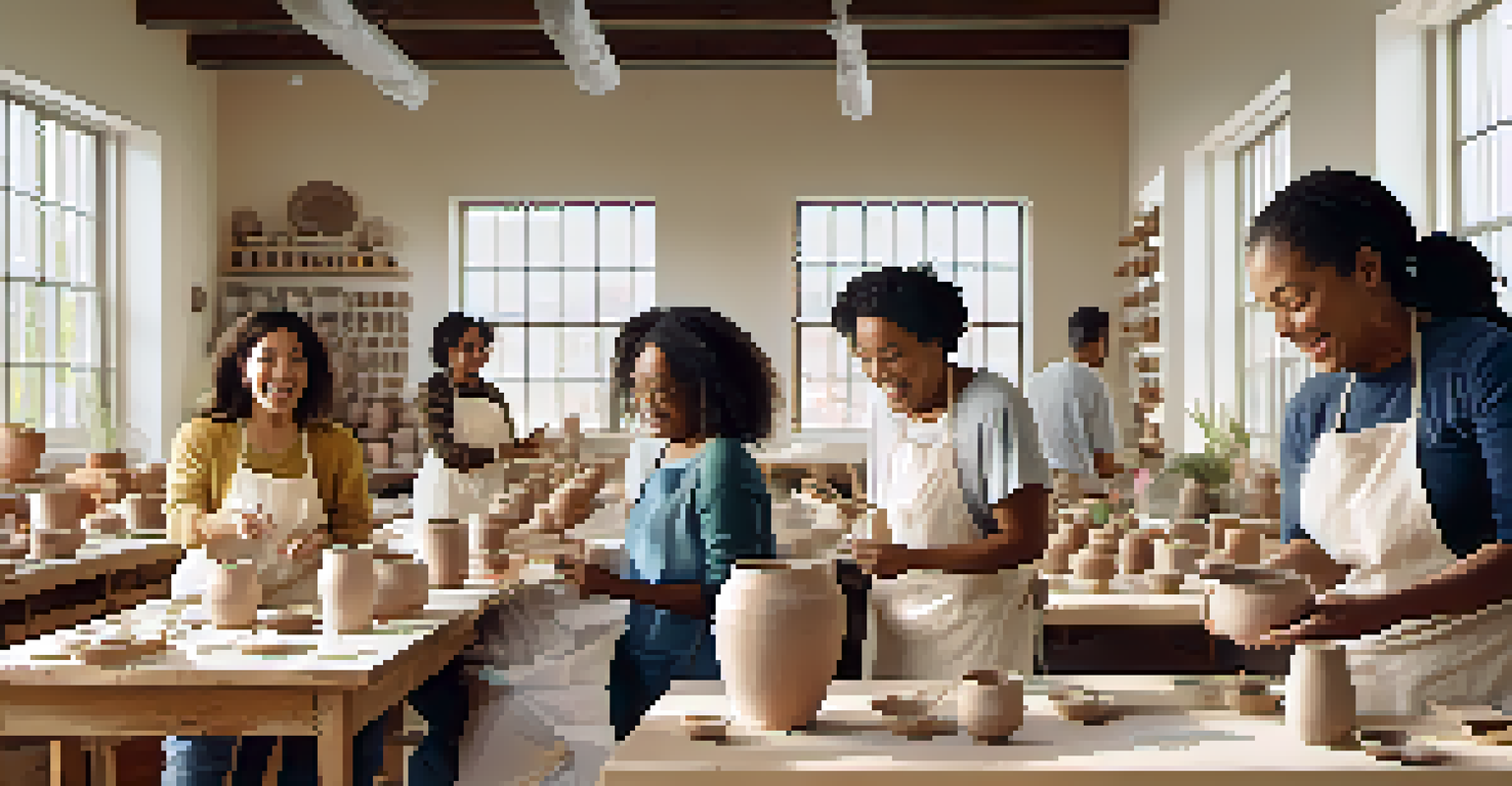Pottery and Wellness: Therapeutic Benefits of Clay Art

Understanding Pottery as a Therapeutic Tool
Pottery has long been recognized as more than just a craft; it's a therapeutic tool that fosters emotional and mental well-being. Working with clay allows individuals to express their emotions in a tangible form, creating a sense of accomplishment and satisfaction. This hands-on engagement can be especially beneficial for those dealing with stress or anxiety, serving as a calming activity that promotes mindfulness.
Art is not freedom from discipline, but disciplined freedom.
As you mold and shape the clay, your focus shifts from worries and distractions to the present moment, akin to a meditative state. This process of creation not only provides a productive outlet but also encourages self-reflection, which can lead to greater self-awareness. Many find that the rhythmic motions of working with clay can soothe the mind, similar to practices like yoga or journaling.
Moreover, pottery is accessible to all skill levels, making it an inclusive form of art therapy. Whether you're a novice or a seasoned artisan, the act of creating something with your hands can invigorate your spirit and enhance your overall well-being.
The Mindfulness Connection in Clay Art
Mindfulness is the practice of being present and fully engaged in the moment, and pottery naturally encourages this state. As you manipulate the clay, your attention is drawn away from life's stresses, allowing you to immerse yourself in the tactile experience. This focus helps cultivate a serene mindset, promoting relaxation and reducing anxiety.

Many pottery enthusiasts report a heightened sense of awareness and clarity after a session at the wheel. This phenomenon can be attributed to the sensory nature of clay art, where touch, sight, and even sound play integral roles. Engaging multiple senses can amplify the therapeutic effects, akin to grounding techniques used in mindfulness practices.
Pottery as a Therapeutic Outlet
Working with clay fosters emotional expression and promotes mental well-being.
Incorporating mindfulness into pottery can transform the activity into a form of meditation. By concentrating on each aspect of the process—like the feel of the clay or the sound of the wheel—you can enhance your emotional resilience and foster a deeper connection to yourself.
Building Community Through Pottery Classes
Pottery classes offer a unique opportunity to connect with others, creating a sense of community that can significantly enhance well-being. Many people find solace in sharing the creative process with like-minded individuals, fostering friendships and support systems. This communal aspect can be especially beneficial for those feeling isolated or lonely.
The act of creating is a form of healing; it allows us to express emotions that words often fail to convey.
Being part of a pottery class allows participants to celebrate each other's progress and creativity. This shared experience not only boosts morale but also inspires collaboration and learning. Just as clay can be molded and shaped, so too can relationships flourish in a supportive environment.
The warmth of a community can be a powerful antidote to stress. Engaging in discussions about techniques or simply sharing life stories while working on pottery can create meaningful connections that uplift and encourage personal growth.
Enhancing Creativity Through Clay Manipulation
Creativity isn't just about artistic expression; it's a valuable skill that can enhance problem-solving and boost overall mental health. Pottery encourages creative thinking as you experiment with shapes, colors, and textures. This playful exploration can reignite passion and joy, essential components for a fulfilling life.
Working with clay challenges individuals to think outside the box, breaking away from routine and encouraging innovative approaches. As you sculpt, you might find yourself discovering new ideas or perspectives that extend beyond the pottery studio and into other areas of your life.
Mindfulness Through Clay Art
Engaging in pottery encourages a present-focused mindset, enhancing relaxation and reducing anxiety.
Moreover, the trial-and-error nature of pottery teaches resilience and patience. Each piece you create, regardless of its outcome, serves as a lesson in creativity, reminding you that the process is just as important as the final result.
Physical Benefits of Working with Clay
Engaging in pottery is not just a mental exercise; it also offers various physical benefits. The act of kneading, shaping, and molding clay engages different muscle groups, providing a low-impact workout that can improve fine motor skills and hand-eye coordination. This aspect is particularly beneficial for individuals looking to enhance their dexterity and strength.
Additionally, the repetitive motions involved in pottery can have therapeutic effects on the body, similar to practices like physical therapy. As you work with clay, you may experience improved flexibility and reduced tension in your hands and arms, which can be especially helpful for those with repetitive strain injuries.
Ultimately, pottery blends physical activity with creative expression, making it a holistic approach to wellness. By nurturing both the mind and body, you can achieve a more balanced, healthy lifestyle.
Self-Expression Through Clay: A Personal Journey
One of the most profound benefits of pottery is its ability to facilitate self-expression. Clay provides an outlet for emotions, allowing individuals to channel their feelings into their creations. Whether you’re crafting a simple mug or an intricate sculpture, each piece reflects a part of yourself, making the process deeply personal.
This form of expression can be particularly healing for those grappling with difficult emotions or experiences. By translating feelings into physical form, individuals can gain insights into their emotions and experiences, fostering a sense of clarity and understanding. It's like giving a voice to your inner thoughts and struggles.
Building Community in Pottery Classes
Pottery classes create a supportive environment that fosters connections and combats feelings of isolation.
Moreover, the journey of creating pottery can lead to increased confidence and self-esteem. As you refine your skills and produce tangible results, you may find yourself feeling a sense of pride and accomplishment that can positively impact other areas of your life.
The Lasting Impact of Pottery on Mental Health
The therapeutic benefits of pottery extend beyond the studio, leaving a lasting impact on mental health. Many individuals who engage regularly in clay art experience reduced symptoms of anxiety and depression. The act of creating becomes a coping mechanism, providing a safe space to process feelings and cultivate joy.
Regular participation in pottery can also promote a routine that encourages self-care. Setting aside time for creative expression can be a grounding ritual that reinforces the importance of prioritizing mental well-being. This commitment to personal time can lead to improved emotional health and resilience.

Ultimately, the journey of pottery is one of healing, creativity, and connection. By embracing the art of clay, individuals can discover not just a craft, but a pathway to enhanced well-being and fulfillment in life.